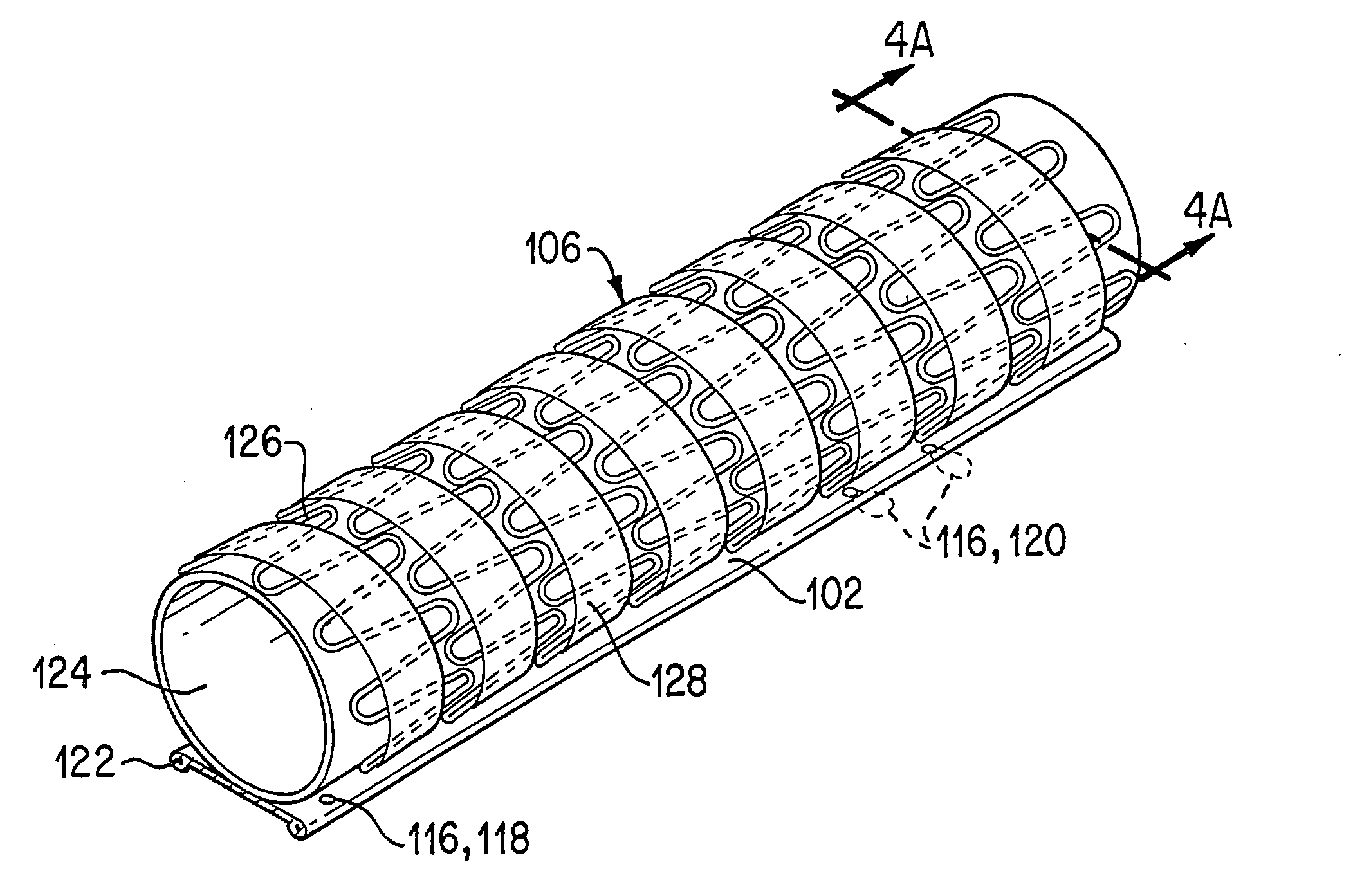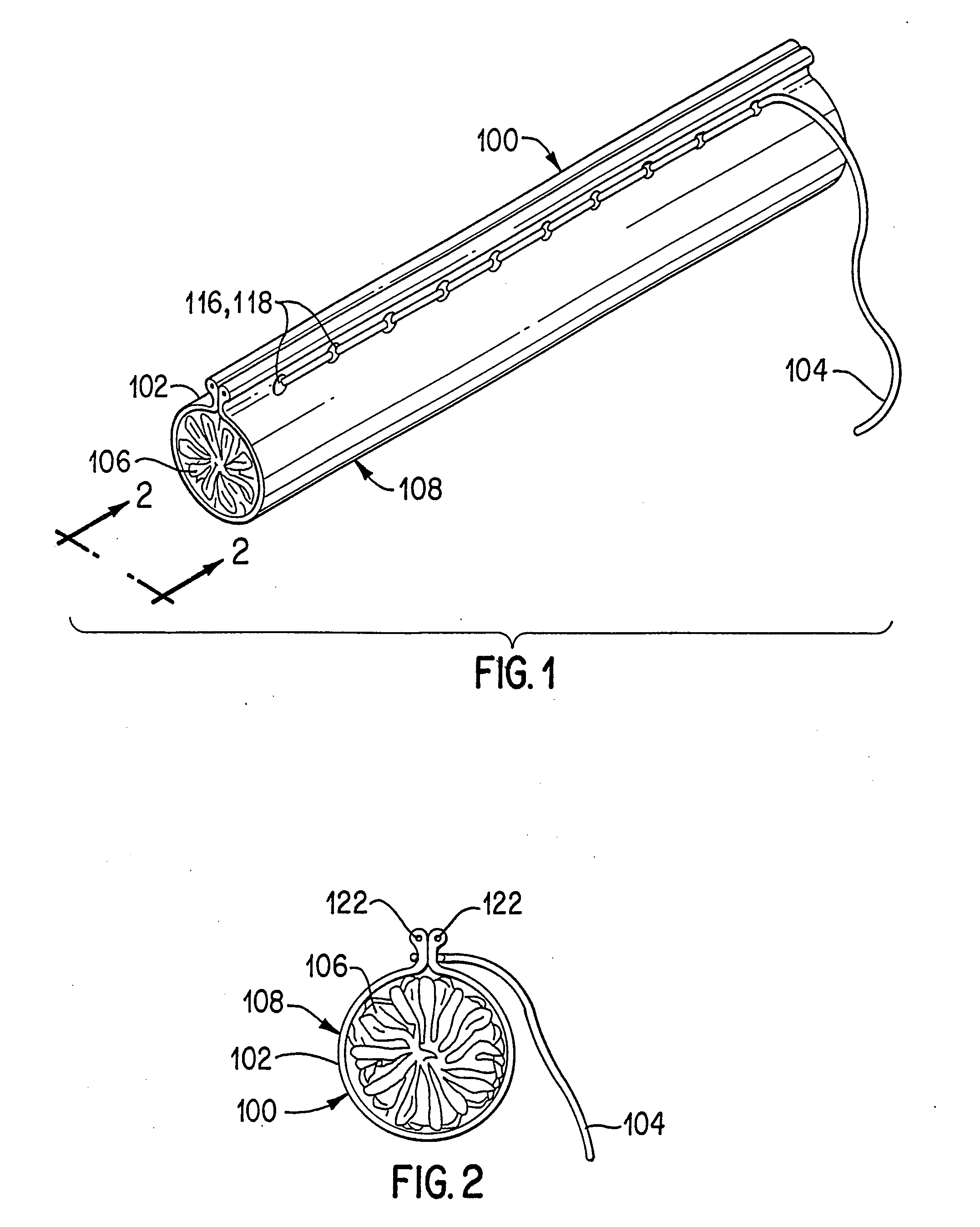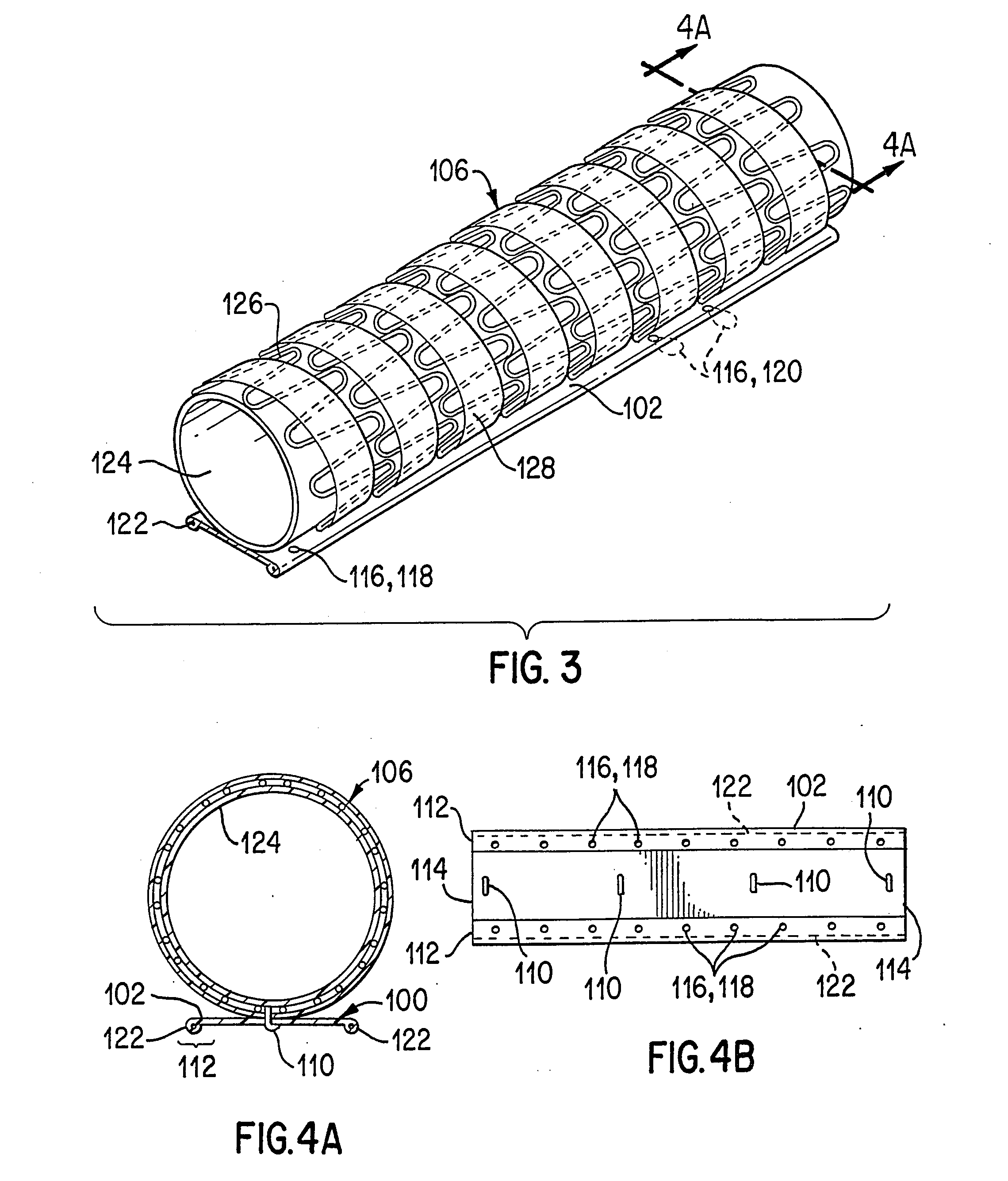Implant deployment apparatus
a technology for deploying equipment and implants, applied in the field of implants, can solve the problems of high incidence of repeat intervention, long recovery time after surgery, morbidity and mortality,
- Summary
- Abstract
- Description
- Claims
- Application Information
AI Technical Summary
Benefits of technology
Problems solved by technology
Method used
Image
Examples
Embodiment Construction
[0069]Referring to the drawings in detail wherein like numerals indicate like elements, delivery systems for delivering implants or devices, such as stents or stent-grafts, to a desired site in mammalian vasculature are shown in accordance with the principles of the present invention. The delivery systems of the present invention generally include a restraining member that is adapted and configured for surrounding at least a portion of a collapsed or compressed implant and a coupling member(s) for releasably coupling portions of the restraining member to one another to maintain the implant in its collapsed or compressed state.
[0070]Referring to FIGS. 1-4, an implant delivery system constructed in accordance with the present invention is shown. Delivery system (100), generally includes a restraining member (102), which as shown may be in the form of a sheet of material, and a coupling member (104) for releasably coupling portions of the restraining member to one another. The restrain...
PUM
 Login to View More
Login to View More Abstract
Description
Claims
Application Information
 Login to View More
Login to View More - R&D
- Intellectual Property
- Life Sciences
- Materials
- Tech Scout
- Unparalleled Data Quality
- Higher Quality Content
- 60% Fewer Hallucinations
Browse by: Latest US Patents, China's latest patents, Technical Efficacy Thesaurus, Application Domain, Technology Topic, Popular Technical Reports.
© 2025 PatSnap. All rights reserved.Legal|Privacy policy|Modern Slavery Act Transparency Statement|Sitemap|About US| Contact US: help@patsnap.com



